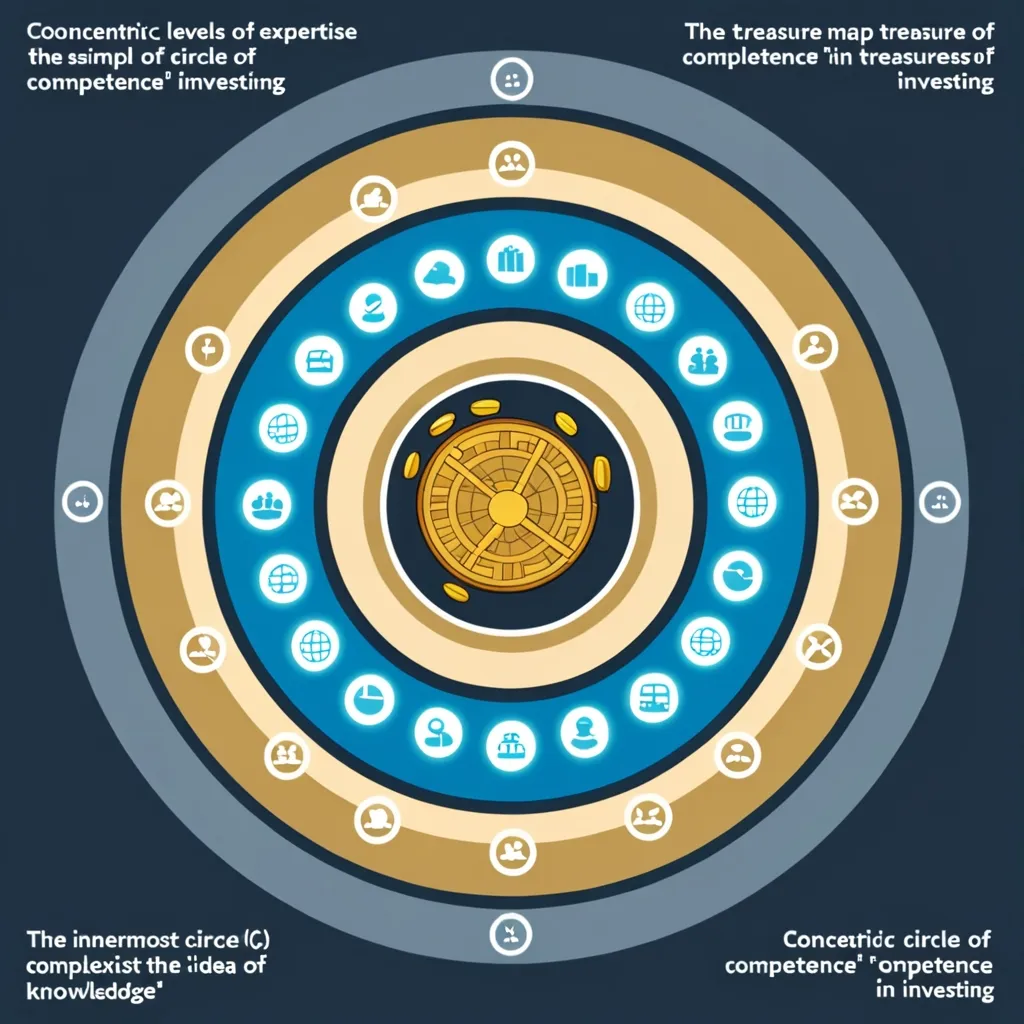Value Investing for Inflation Protection: Building a Resilient Portfolio
Inflation can quickly erode wealth, turning seemingly solid investment returns into real-term losses. As a value investor facing inflationary pressures, your strategy must evolve beyond traditional approaches. The current economic landscape demands more than just finding undervalued stocks—it requires identifying businesses with structural advantages that can thrive when purchasing power falls.
The most successful investors understand that inflation protection doesn’t come from fleeing to gold or commodities alone. It comes from owning exceptional businesses with specific characteristics that allow them to maintain or enhance real returns during currency devaluation. Let’s examine how to build such a portfolio.
When prices rise across the economy, most companies struggle. Input costs increase, consumer spending power decreases, and margins compress. But certain businesses possess qualities that transform inflation from a threat into an opportunity. These companies combine strong pricing power with modest capital requirements—a powerful combination in inflationary environments.
“The single most important decision in evaluating a business is pricing power. If you’ve got the power to raise prices without losing business to a competitor, you’ve got a very good business.” - Warren Buffett
How can you identify businesses with genuine pricing power? Look beyond simple price increases. True pricing power means passing costs to customers without losing volume or relationships. This requires examining several business characteristics:
Is the product or service essential rather than discretionary? During inflation, consumers cut discretionary spending first while maintaining essential purchases.
Does the company provide something with low cost relative to its importance? Software services that cost a tiny fraction of a customer’s budget but deliver critical functionality rarely face resistance to price increases.
Are switching costs high? If changing providers would disrupt operations or require significant retraining, customers often accept price increases rather than switch.
Does the business hold intellectual property or unique positioning that prevents competitors from offering similar value at lower prices?
What percentage of the company’s costs are exposed to inflation? Businesses with high intellectual property content and low physical input requirements may have minimal exposure to rising costs.
Have you analyzed how the company performed during previous inflationary periods? Historical performance during the 1970s inflation, post-2008 monetary expansion, or recent pandemic inflation provides valuable insights.
Consider how contract structures affect inflation protection. Companies with long-term fixed-price contracts may suffer during inflation, while those with inflation-adjustment clauses or short contract cycles can rapidly adjust pricing.
Tangible assets that appreciate with inflation provide another layer of protection. Real estate, natural resources, and infrastructure with limited competition often see values rise with general price levels. However, not all asset-heavy businesses benefit from inflation.
What separates inflation winners from losers among asset-heavy businesses? The critical factor is capital requirements. Companies needing constant reinvestment to maintain competitive position often struggle during inflation as replacement costs rise faster than prices can adjust.
The ideal inflation-resistant business combines price flexibility with modest ongoing capital needs. These companies can raise prices while avoiding the capital-intensive “treadmill” of constantly rising replacement costs.
“Inflation is when you pay fifteen dollars for the ten-dollar haircut you used to get for five dollars when you had hair.” - Sam Ewing
How does your portfolio balance across different inflation-resistant categories? Rather than concentrated sector bets, consider building positions across various business types that share inflation-resistant characteristics:
Capital-light businesses with strong intellectual property can raise prices without significant cost exposure. Software companies, professional services, and asset-light franchisors often fit this profile.
Essential service providers with regulatory protection or natural monopolies typically maintain pricing power during inflation. Certain utilities, infrastructure operators, and healthcare services demonstrate this quality.
Businesses selling branded consumer necessities with modest price points relative to consumer budgets often pass through inflation successfully. Leading consumer staples companies have demonstrated this ability for decades.
Companies controlling scarce natural resources with growing demand curves frequently outperform during inflation. These businesses benefit from both price increases and asset appreciation.
Is your analysis focused on the right metrics? Traditional value metrics can mislead during inflation. Price-to-earnings ratios appear attractive when earnings rise with inflation, but this doesn’t necessarily indicate value creation if capital costs rise similarly.
Instead, focus on businesses generating high returns on capital after adjusting for inflation. Companies producing real returns significantly above their inflation-adjusted cost of capital create genuine economic value regardless of monetary conditions.
Traditional inflation hedges like gold, TIPS (Treasury Inflation-Protected Securities), and commodities have their place, but they rarely match the inflation protection of exceptional businesses with pricing power and low capital requirements. Unlike passive hedges, great businesses compound wealth rather than merely preserving it.
“Inflation is taxation without legislation.” - Milton Friedman
What about the practical metrics for measuring inflation resilience? Consider these when evaluating potential investments:
Gross margin stability during past inflationary periods indicates pricing power. Companies maintaining or expanding margins while input costs rise demonstrate valuable pricing advantages.
Capital expenditure requirements as a percentage of sales or depreciation provide insights into future capital needs. Lower ratios typically indicate better inflation protection.
Free cash flow conversion rates show a business’s ability to convert accounting profits into distributable cash. High conversion rates often correlate with inflation resistance.
Return on invested capital (ROIC) spread over weighted average cost of capital (WACC) reveals true economic value creation. Companies with wide, sustainable spreads create real wealth regardless of monetary conditions.
Customer retention rates during price increases demonstrate genuine pricing power versus theoretical pricing flexibility.
Have you considered how companies with inflation advantages might be valued differently? The market often fails to fully appreciate these characteristics, creating opportunities for value investors. Companies with pricing power and low capital intensity frequently appear expensive on traditional metrics while actually being undervalued based on their inflation-adjusted cash generation potential.
Examining case studies of successful value investments during inflationary periods reveals consistent patterns. Companies maintaining purchasing power during the 1970s inflation typically combined pricing power with conservative balance sheets. During the 2008-2012 monetary expansion, businesses with global pricing power and intellectual property advantages outperformed. In recent pandemic-era inflation, companies with digital business models and essential positioning demonstrated remarkable resilience.
What about inflation’s impact on company valuation? Higher inflation typically means higher nominal interest rates, which theoretically reduce the present value of future cash flows. However, businesses with strong pricing power often see accelerating nominal growth rates that offset higher discount rates, leading to stable or even expanding valuations.
Are you considering international diversification as part of your inflation protection strategy? Different countries experience varying inflation rates and monetary policies. Geographic diversification can reduce exposure to any single currency’s devaluation while providing access to markets with favorable structural characteristics.
“Inflation is the one form of taxation that can be imposed without legislation.” - Milton Friedman
How should your portfolio construction change during periods of elevated inflation risk? Consider these adjustments:
Increase allocation to businesses demonstrating historical pricing power advantage.
Reduce exposure to companies with high ongoing capital requirements and limited pricing flexibility.
Prioritize businesses with predominantly variable rather than fixed cost structures.
Focus on companies with strong balance sheets and limited refinancing needs during periods of rising interest rates.
Consider selectively adding commodity producers or real asset owners as portfolio ballast rather than core holdings.
The most powerful inflation protection comes from companies that combine multiple advantageous characteristics. A business with strong pricing power, low capital requirements, growing demand, and skilled capital allocation provides far greater inflation protection than any single-factor strategy.
What’s your time horizon for inflation protection? Short-term inflation hedges often differ from long-term wealth preservation vehicles. Traditional inflation hedges like gold and TIPS may protect purchasing power over shorter periods but rarely compound wealth over decades. Exceptional businesses with durable competitive advantages accomplish both objectives.
By focusing on businesses with inflation-adjusted high returns on capital, you can build a portfolio that not only withstands inflationary pressures but potentially benefits from them. The key is identifying companies where pricing power exceeds input cost sensitivity, and capital requirements remain modest relative to cash generation.
This approach requires patience and discipline. The market frequently underestimates both inflation risks and the value of businesses with structural inflation advantages. This creates opportunities for value investors willing to look beyond simple valuation metrics to understand fundamental business economics.
Remember that inflation protection isn’t a separate investment goal—it’s an essential component of any value investing approach focused on preserving and growing real purchasing power. By incorporating inflation resilience into your core investment analysis, you build protection into your portfolio rather than treating it as an afterthought.
What specific businesses in your portfolio truly possess these inflation-resistant qualities? The answer to this question may reshape your investment approach and provide superior long-term protection against one of the greatest threats to investment success.






